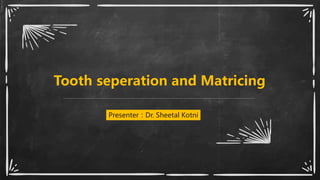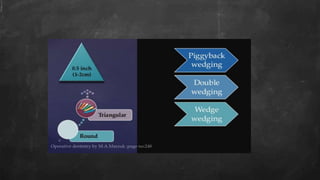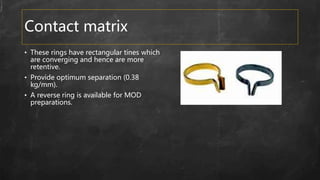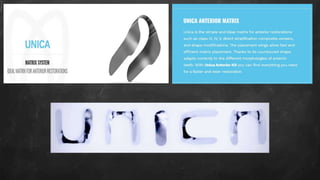This document discusses tooth separation techniques and matrices used in dental restorations. It covers two main topics:
1. Separators: Devices used to rapidly or slowly separate teeth during dental procedures. Rapid separators include wedges and Elliot separators, while slow separators include rubber bands, wires, and oversized temporary crowns.
2. Matrices: Devices that create a temporary wall for dental restorations when tooth structure is missing. Various matrix types exist for different cavity classes, including Tofflemire matrices for Class II cavities, shaped strips for Class III/IV, and window matrices for Class V. Matrices are made of materials like metal, cellophane or mylar and aim to confine
















































































